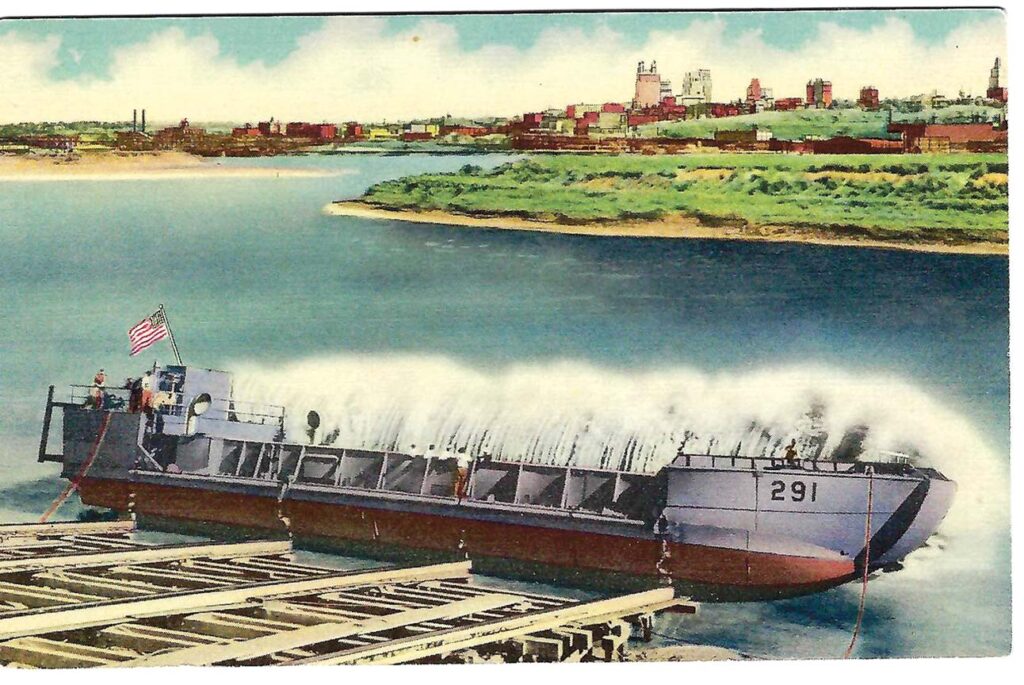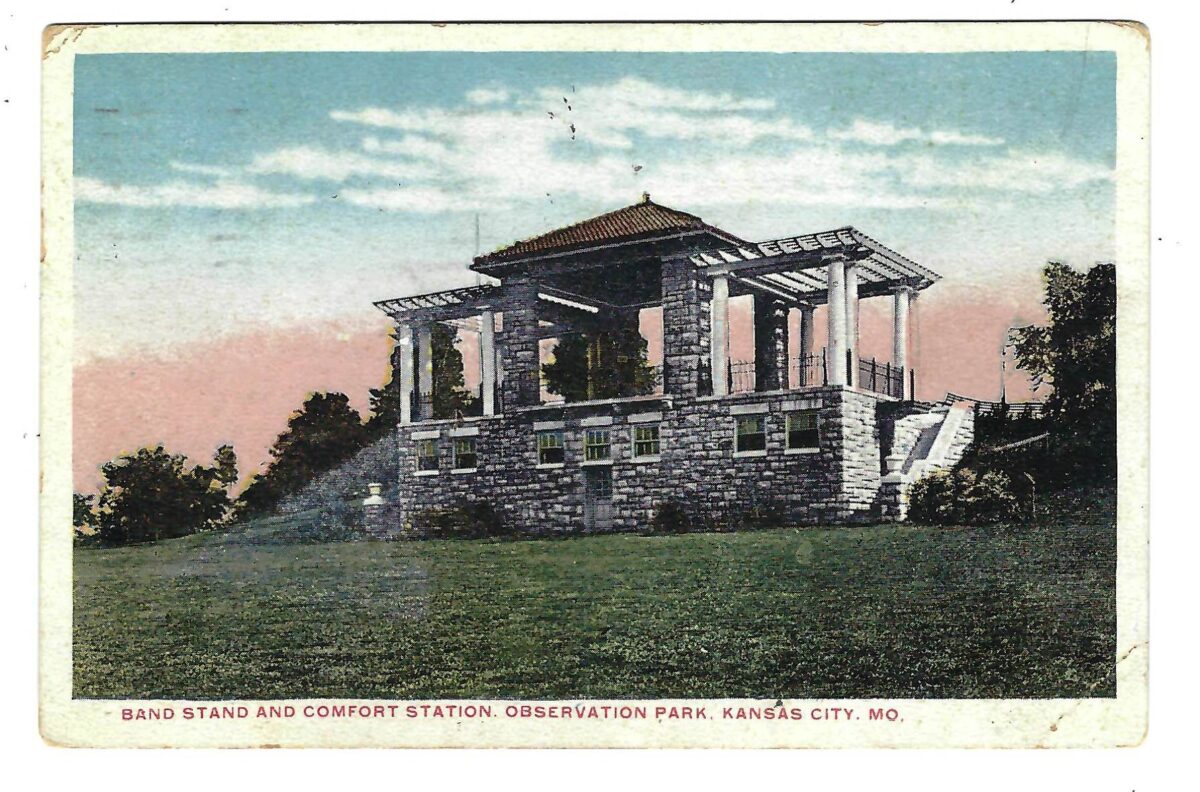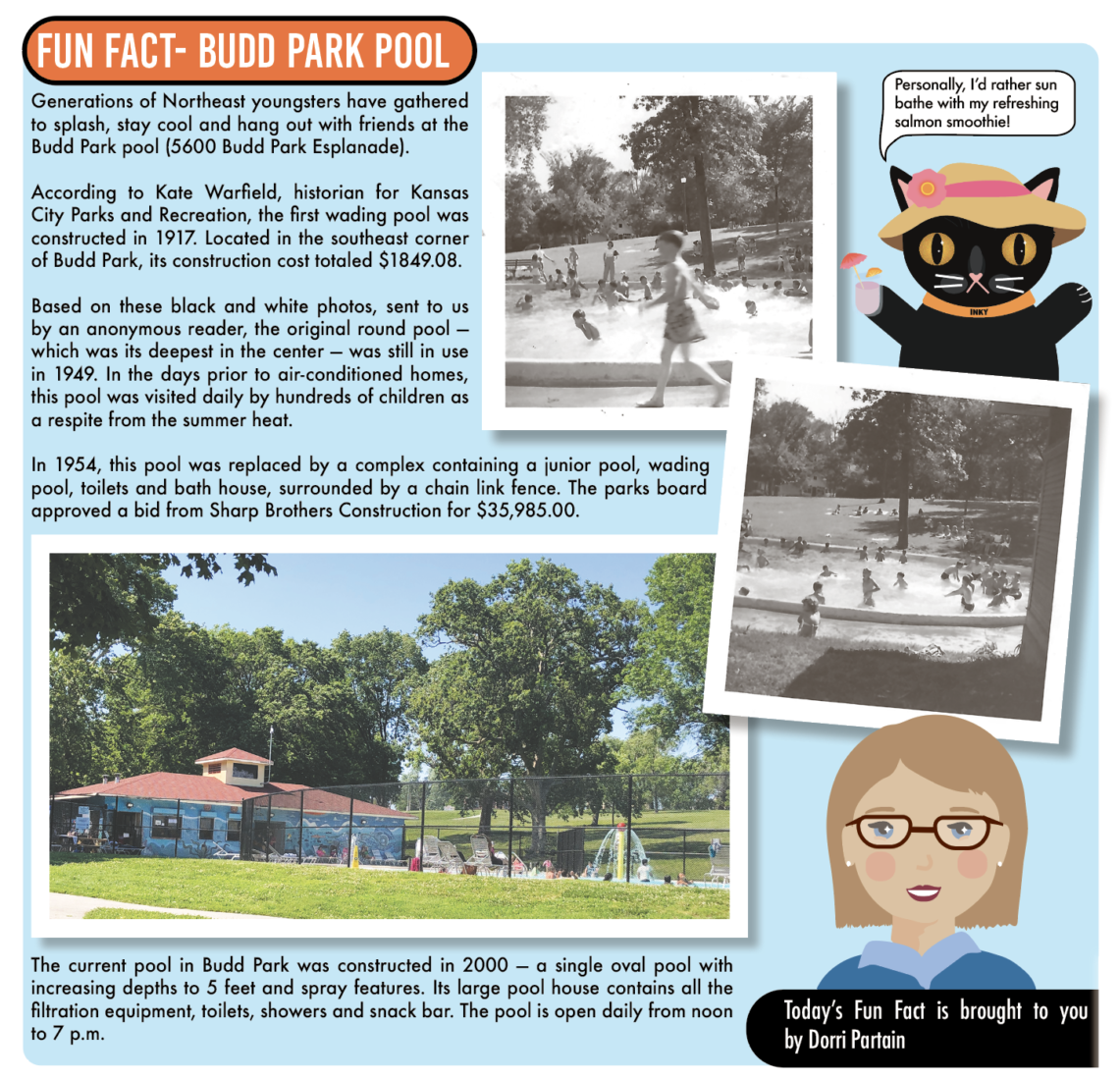
Michael Bushnell
Publisher
This Linen-era, Art Tone, “Glo-Var” finished postcard was published exclusively by the Beals Postcard Company of Des Moines, Iowa. It shows LCT-291 being launched into the Missouri River by the workers at the Harry Darby Shipyards in Kansas City, Kan. LCT stands for Landing Craft Tank, capable of carrying large military equipment such as tanks, trucks or half-tracks.
These flat-bottomed crafts were used by the US Armed Forces during World War II to land soldiers and equipment directly onto beaches in the European and Pacific theaters of the war.
Harry Darby Sr., started the Missouri Boiler Works Company in Kansas City in 1895. Shortly after the turn of the 20th century, he moved the firm to Kansas City, Kan., and changed its name in 1904 to the Darby Steel Plate Corporation located at 3rd Street and Armstrong Avenue, on the banks of the Kaw River.
After the senior Darby’s death in 1923, his son, Harry Darby Jr., bought the company and established Darby Steel Company. In 1938 Darby purchased the Kaw Steel Construction Company, which was in bankruptcy from his father, and formed the Darby Corporation.
During WWII, Kansas City literally became a hub for the defense industry. With North American Aviation at the Fairfax Airport churning out Mitchell B-25 bombers to the Pratt & Whitney plant on Bannister Road supplying airplane motors for the Army Air Corps, Darby secured the contract to provide amphibious assault ships for the United States Navy.
At one point in time, he operated the largest shipyard in the region at the junction of the Kaw and the Missouri rivers, launching at least one barge per day for the war effort. Over the course of WWII, the Darby Shipyards manufactured over 1,300 LCMs, short for Landing Craft Mechanized, and over 60 larger LCTs, all floated downriver to New Orleans and the Gulf of Mexico to for use in the invasions of Italy, France and islands in the Pacific theater of operations.
In January 1944, the Darby Shipyard received a large order for LCMs and LCTs to be constructed for an upcoming top secret mission. However, a dry spring season in 1944 failed to elevate the Missouri River to a depth sufficient enough to float the completed ships downstream.
Top military brass was ready to postpone the date of this important mission should the river not rise enough to accommodate the flotilla. Water was even released from a South Dakota reservoir with the hopes of raising the river level enough to float the completed barges downstream. The plan only raised the river depth by one inch.
Chalk it up to divine providence or just good timing, at the last possible moment the skies over Kansas City opened up and enough rain fell to significantly raise the level of the Missouri River enough to float the fleet of Darby’s completed “Prairie Ships,” as they were called, downstream to the Gulf for delivery to the Navy.
The top secret operation was of course “Operation Overlord,” or D-Day, which was successfully executed by the Allies on June 6, 1944.
According to Navsource.org, the vessel shown on this postcard, LCT-291, was launched in June, 1943, and delivered to the Navy the next month. It was immediately transferred to the British Royal Navy and re-designated HM LCT-2291 for the duration of the war. Its length was 114 feet and was crewed with one officer and 10 enlisted men. With a cargo capacity of 150 short tons, it had a range of 700 nautical miles at a speed of 7 knots. No record of HM LCT-2291 exists after 1946.
After the War, the company continued to fabricate steel plates used in water towers and railroad equipment. The company survived until 1989, two years after the death of Harry Darby Jr. The area where the Darby shipyard was located is now under the entrance ramp to Fairfax Trafficway. No evidence of the Darby shipyard exists today.



















